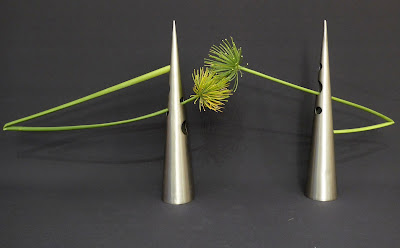And welcome to my agapanthus issue. Yes, I know they are as common as dirt around here but that doesn't make them any less beautiful or versatile. The name 'agapanthus comes from the Greek and it means 'Love flower'. And I love them!
Some weeks ago I had to remove, literally, hundreds of spent flowers. They were too many for the two large bins we have for garden waste, so the job had to be done over two collection cycles. In the process I kept finding interesting stems that I could not discard and was compelled to keep and then arrange. It turned into an agapanthus workshop for one. Which, I have to admit, I enjoyed. The photographs, below, are of arrangements using agapanthus in the stages after the blue or white flowers had died.
 |
| Dried and sprayed agapanthus with hawthorn berries and roses |
 |
| With nandina domestica nana |

 |
| In an asymmetrical Lacquer container |
 |
| In a glass container |
 |
| With New Zealand Flax |
And now for class.
For last lesson I had set the theme 'Improving Your Technique - In a suibanan Without Kenzan' from Book 5. This is an extension of the Lesson in Book 4 and it includes using flowers and leaves as well as branches and employing a number of fixing methods. I'd like to point out that in all of the arrangements, below, the structure that was created stands without resting against the sides of the suiban, even though it may look like it does in the photos.
 |
| Vicky's very tall arrangement using dried strelitzia leaves, Japanese flowering quince and a very tall gladiolus, which was a gift to me from Dianne Longley |
 |
| Lucy's was also a very tall arrangement. She used strelitzia leaves and Oriental lilies |
 |
| Nicole used agapanthus, amaranthus and nandina domestica nana |
 |
| I used Siberian dogwood branches and chrysanthemums In this more traditional style arrangement |
 |
| Here I used a strleitzia flower and leaf with agapanthus |
Bye for now,
Emily










